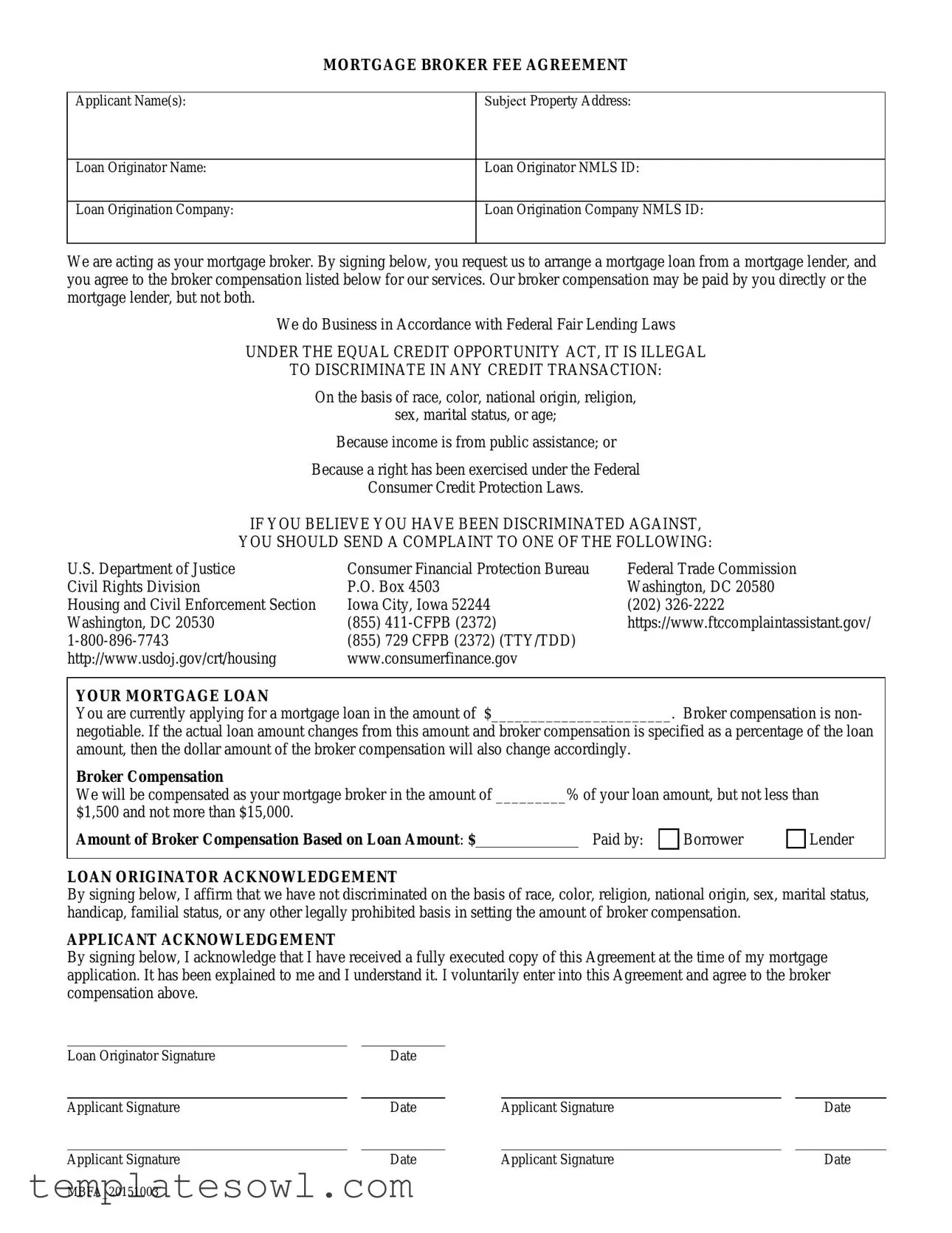What is a Broker Fee Agreement?
A Broker Fee Agreement is a document that outlines the relationship between a mortgage broker and a borrower. It indicates that the broker will assist the borrower in obtaining a mortgage loan. By signing this agreement, the borrower acknowledges the broker's service and agrees to the compensation structure for those services.
Why do I need to sign a Broker Fee Agreement?
Signing a Broker Fee Agreement formalizes your relationship with the mortgage broker. It ensures that both parties understand their roles and the associated costs. This clarity can help to prevent misunderstandings as you navigate the mortgage application process.
How is the broker compensation determined?
Broker compensation is typically determined as a percentage of the total loan amount. The agreement specifies this percentage, which cannot be negotiated. The amount received by the broker must also fall within a minimum of $1,500 and a maximum of $15,000, regardless of the total loan amount.
Who pays the broker compensation?
Broker compensation can be paid by either the borrower or the lender, but not both. This means it is essential to understand who will be responsible for these fees before proceeding with the mortgage application. Your broker will clarify this point based on your specific situation.
What if the loan amount changes?
If the loan amount changes after the Broker Fee Agreement is signed and if the broker's compensation is a percentage of that amount, the actual dollar amount of compensation will also change. It is important to stay informed of any adjustments to the loan amount as this could affect the overall fees.
What laws protect me from discrimination in lending?
Federal laws, particularly the Equal Credit Opportunity Act, protect borrowers from discrimination in any credit transaction. Discrimination cannot occur based on various prohibited bases, including race, color, national origin, sex, and marital status. Understanding these protections is crucial for all borrowers.
What should I do if I believe I have experienced discrimination?
If you feel you have been discriminated against during the mortgage process, it is imperative to take action. You can file a complaint with the U.S. Department of Justice, the Consumer Financial Protection Bureau, or the Federal Trade Commission. Each of these organizations provides specific channels to address such grievances.
What does the Applicant Acknowledgement section mean?
The Applicant Acknowledgement section indicates that you have received a copy of the Broker Fee Agreement. By signing this section, you confirm that the terms have been explained to you and that you understand your responsibilities and the broker's compensation. This acknowledgement is important for ensuring transparency in the transaction.
Is broker compensation negotiable?
No, broker compensation is non-negotiable as outlined in the Broker Fee Agreement. Thus, it is crucial to understand these terms upfront, as they will apply regardless of any discussions about the loan amount or other fees.
What happens if I do not sign the Broker Fee Agreement?
If you choose not to sign the Broker Fee Agreement, the mortgage broker will not be authorized to proceed in assisting you with the mortgage application. This step is necessary for them to provide their services legally, so it is essential to review and sign if you wish to move forward.

